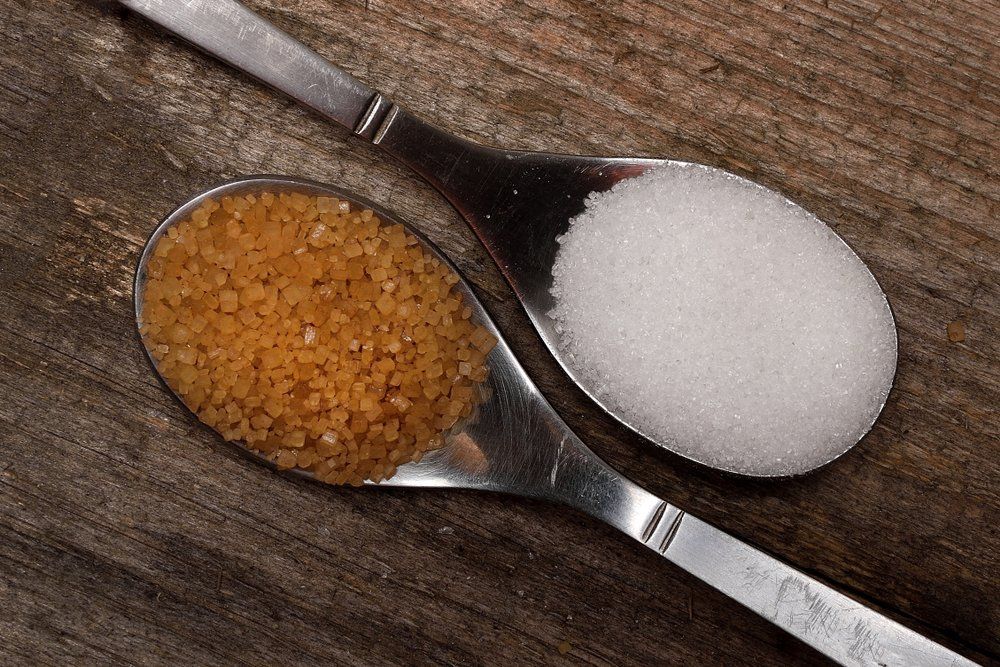Discovering the Distinctions in operation and Advantages Between Beet Sugar Vs Cane Sugar
In the culinary globe, the choice in between beet sugar and cane sugar is not simply about sweet taste but entails a nuanced consideration of taste, application, and effect. While both sugars stem from different plants, each undertakes special manufacturing processes that discreetly influence their attributes and suitability for different recipes. As chefs and customers increasingly prioritize both the ecological and flavor profiles of their active ingredients, understanding these distinctions comes to be important. This expedition provides understanding right into how each sugar type can best boost culinary creations.
Origins and Manufacturing Procedures of Beet and Cane Sugar

Walking cane sugar, on the various other hand, comes from the sugarcane plant, a tropical turf native to Southeast Asia yet currently cultivated in tropical areas worldwide - beet sugar vs cane sugar. The manufacturing of cane sugar begins with the harvesting of cane stalks, which are crushed to launch the juice.

Nutritional Material and Wellness Considerations

When contrasting the nutritional content of beet sugar and cane sugar, it becomes evident that both kinds basically supply the exact same caloric values, with around 16 calories per tsp and no considerable nutrient diversity. Each is composed virtually completely of sucrose, which is a basic carbohydrate that supplies fast energy yet does not have vitamins, minerals, or fiber. This similarity encompasses their influence on health and wellness, particularly worrying blood glucose levels. Both sugars, when eaten in excess, can add to elevated blood sugar degrees, a risk variable for diabetic issues and other metabolic problems. Extreme intake can lead to weight gain and oral problems, as both sugars are similarly cariogenic, advertising tooth decay. From a wellness point of view, regulating intake of any kind of kind of sugar, whether from beet or cane, is suggested to prevent these possible unfavorable results on well-being. Hence, neither holds an unique benefit over the other in terms of wellness benefits.
Taste Accounts and Culinary Applications
Regardless of their comparable chemical frameworks, beet sugar and cane sugar differ discreetly in flavor, which you can try this out can affect their use in numerous culinary contexts. Cane sugar often brings a hint of molasses, also in its refined type, lending a cozy, caramel-like undertone that improves baked goods, coffee, and chocolate-based recipes. On the various other hand, beet sugar is defined by its very fine-tuned, neutral preference, making it a versatile sugar that does not alter the flavor accounts of dishes.
Ecological Influence and Sustainability
While both beet and cane sugars are originated from plants, their environmental effects vary considerably as a result of the distinct techniques of farming and processing needed for each. Sugar beet farming frequently entails extensive mechanization, which can raise nonrenewable fuel source usage and carbon exhausts. Beets can be grown in cooler environments and call for much less irrigation, potentially Read Full Report decreasing water usage contrasted to sugarcane. Sugarcane, on the various other hand, is generally grown in tropical regions where it depends greatly on watering and a longer growing period, boosting its water impact.
In addition, the handling of sugarcane usually generates a significant amount of waste, consisting of bagasse, which, although functional as biofuel, regularly adds to air contamination if melted inefficiently. Sugar beet handling makes use of more of the raw materials, leading to much less waste. Both industries encounter obstacles in lowering their ecological impacts, however ongoing technologies in farming methods and waste management this post are intending to improve sustainability.
Economic Aspects Affecting the Sugar Market
The financial dynamics of the sugar sector are considerably affected by global market needs and trade policies. Variables such as tariffs, aids, and global trade contracts play crucial functions in forming the competitive landscape. For instance, in areas where sugarcane or sugar beet production is subsidized, producers might have a financial advantage that allows them to offer lower costs on the international market. This can produce variations in productivity and market access for producers in countries without such subsidies.
Furthermore, changes in worldwide demand for sugar, affected by nutritional patterns and industrial use in foodstuff, directly effect costs and production levels. beet sugar vs cane sugar. Weather conditions likewise play an essential function, as they can substantially impact crop yields and, as a result, the supply chain. This variability introduces a level of financial unpredictability that can bring about financial investment volatility in sugar manufacturing industries, affecting decisions from planting to market strategy
Verdict
To conclude, both beet and cane sugar have one-of-a-kind top qualities that match various culinary needs. While cane sugar imparts an abundant taste suitable for improving baked goods, beet sugar's neutrality is perfect for lighter recipes. Nutritional resemblances notwithstanding, their distinctive manufacturing procedures and environmental impacts include intricacy to the option between them. Hence, comprehending these differences helps cooks and consumers make educated decisions that align with their health, cooking, and ethical choices.